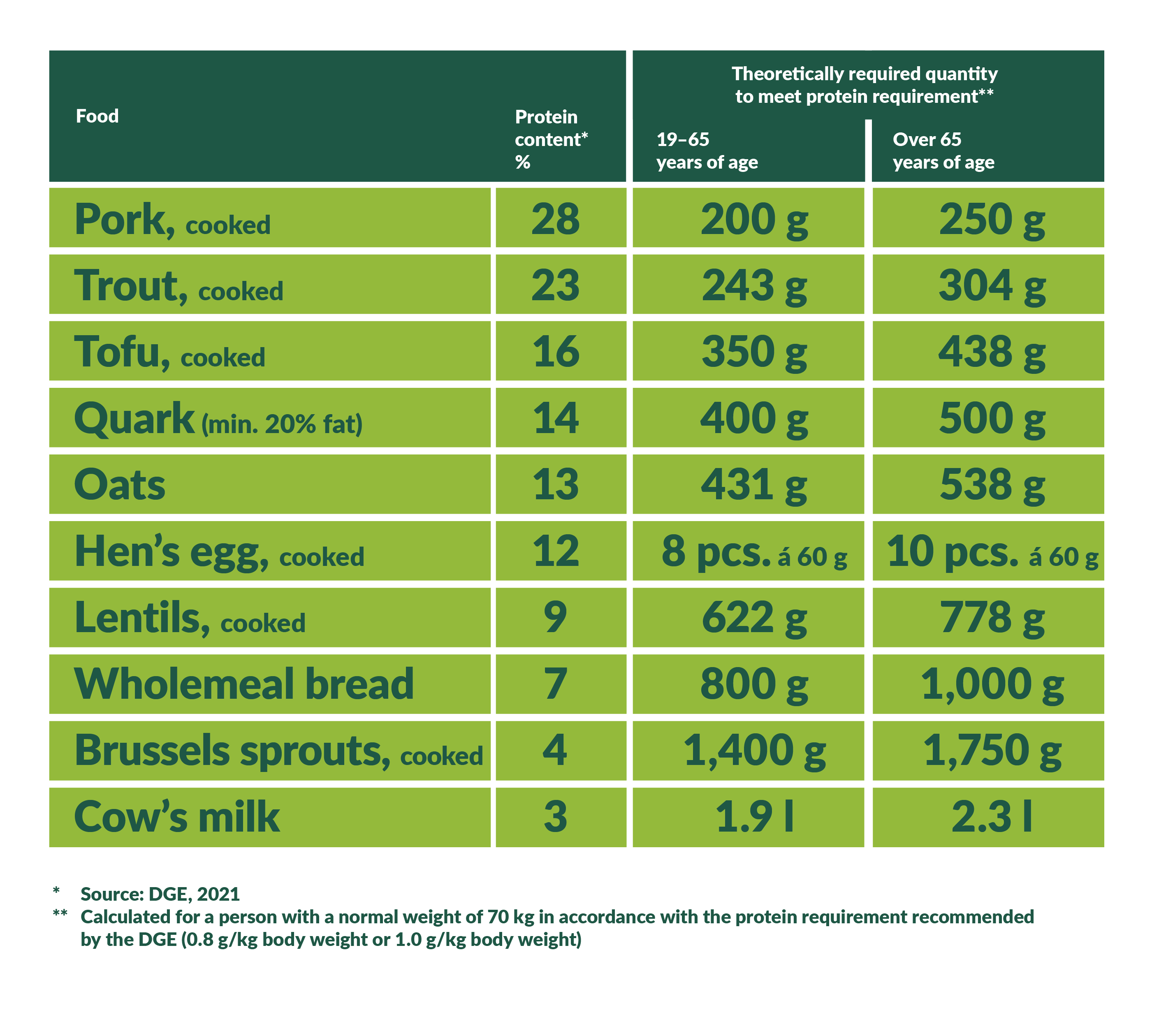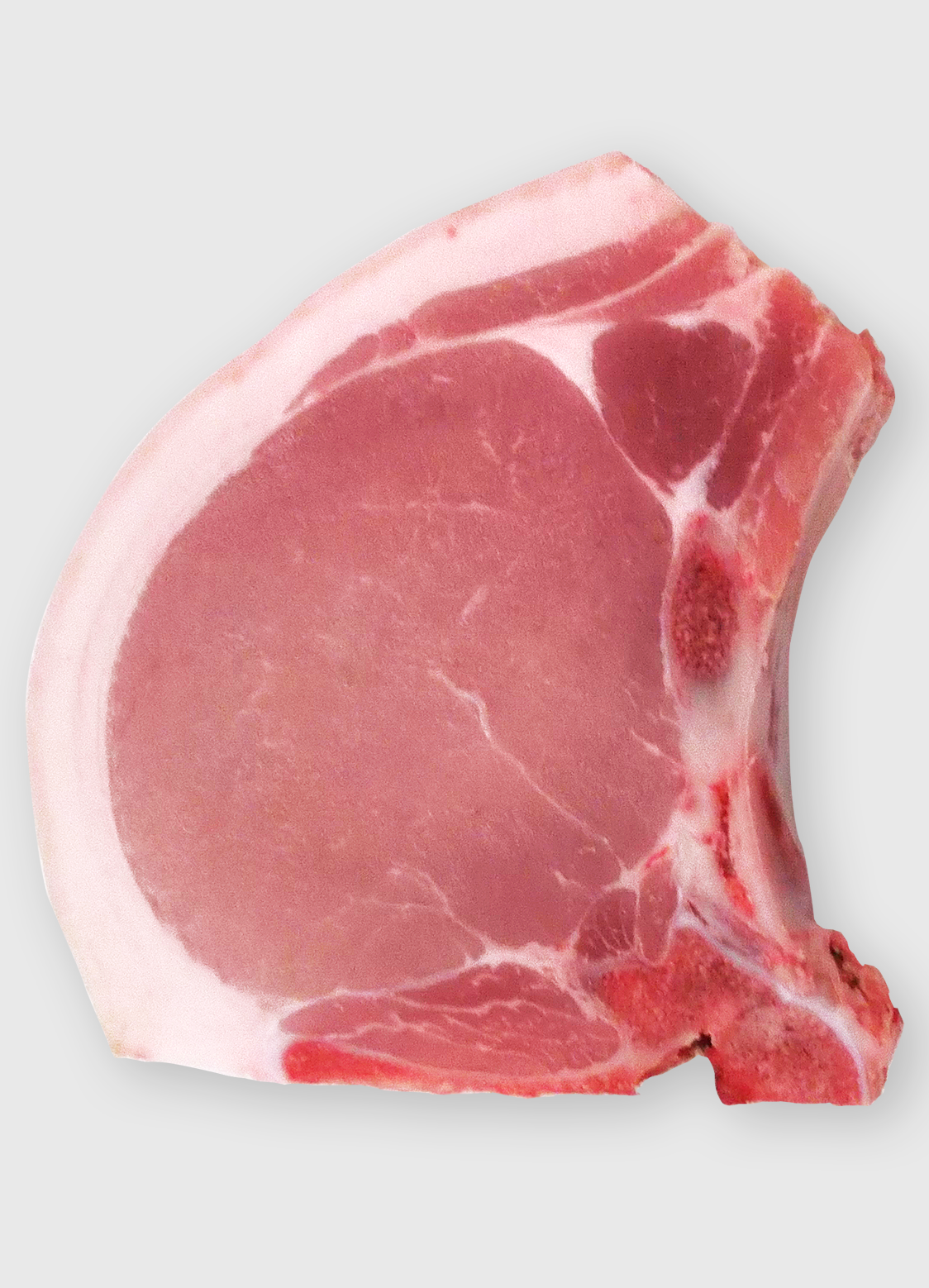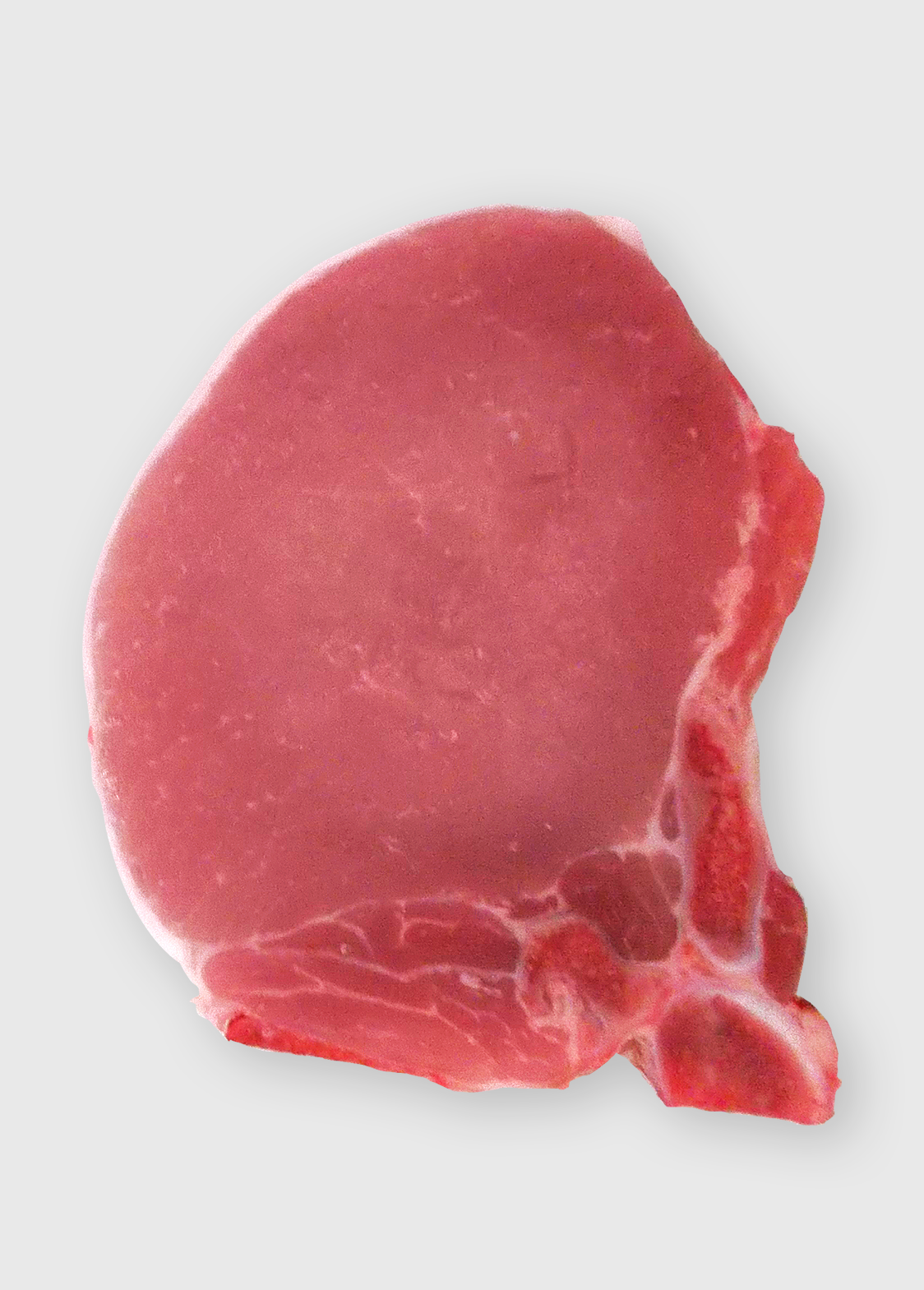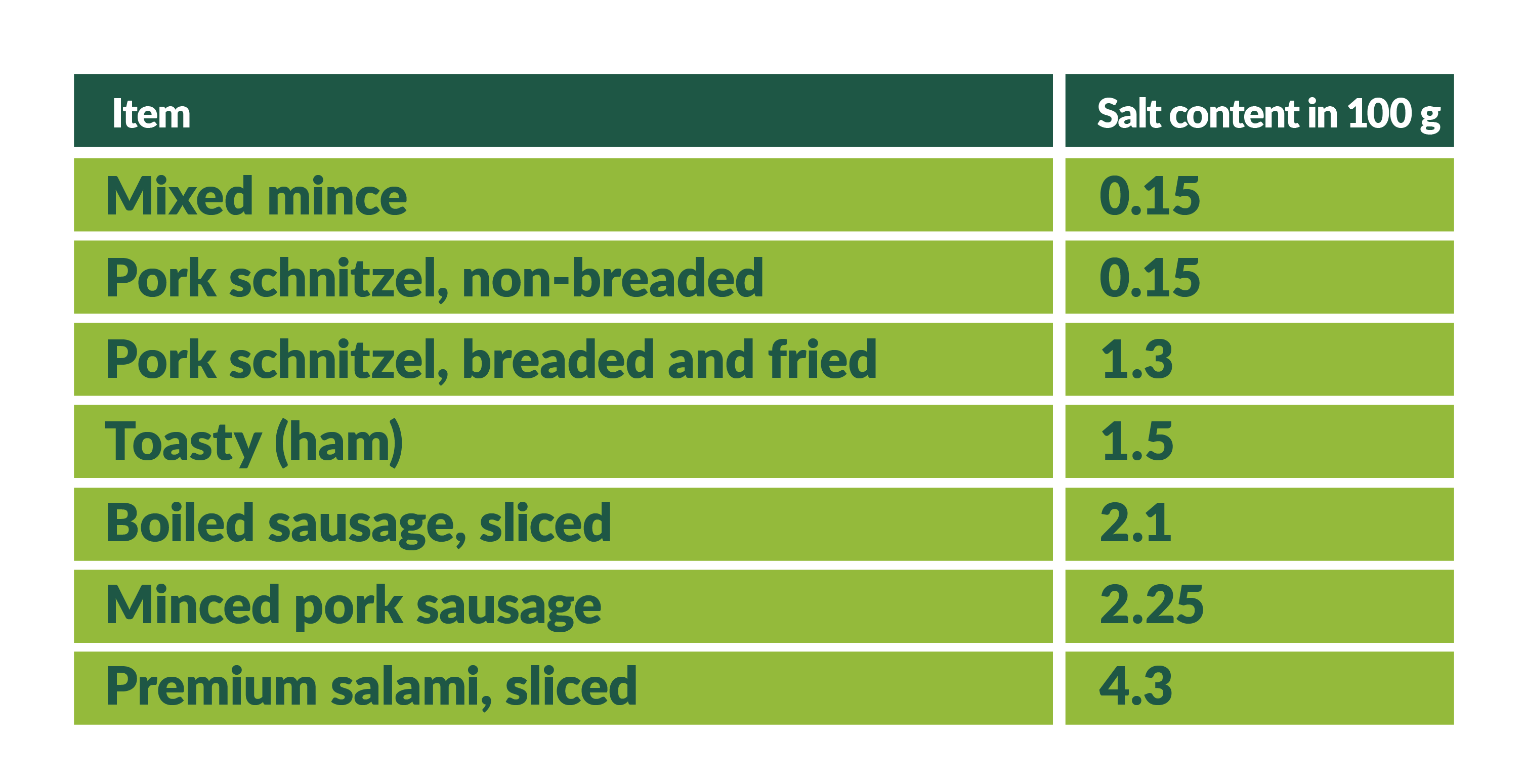Every day our meat and meat products land on the plates of hundreds of thousands of consumers. We thus make every effort to ensure that they taste good, are of high quality and contribute to a balanced, nutritious diet.
Healthy nutrition with meat
We make a contribution to a healthy and balanced diet with high-quality and wholesome products. The quality of the raw materials and their nutrient content is very important to us and we guarantee this through a number of production steps, inspections and tests. In doing so, as a market and technology leader in meat processing, we set standards for the entire industry. Along the value-creation chain, we process the raw materials and then the processed products so that they taste good, are safe and retain the nutrients that are important in a diet.
Important key figures
Meat is a fixed part of a healthy and balanced diet
A healthy, nutritious diet is essential, especially in our performance-oriented society. The requirement of the human body for a high nutrient density increases with age. Meat is an important supplier of nutrients and provides the body with essential proteins, vitamins and minerals, amongst other things. At the same time, when including meat in a diet, care must be taken to ensure that not too much fat and salt are absorbed. On the whole, meat and meat products have a fixed role in a balanced diet. The extensive range of products and numerous preparation options offer a wide variety of flavours and enable a balanced diet. During the manufacture, we meet the changing goals and needs of consumers, e.g. with the cut type; inspection and reduction of the fat and salt content; and gentle, nutrient-retaining further processing.
Nutrition pyramid, source: DGE
Nutrition circle, source: DGE
Benefits of a diet that includes meat
- Meat and meat products are important components of a wholesome diet.
- Together with other animal products, such as fish and eggs, these make a significant contribution to supplying the body with proteins.
- Furthermore, the human body is very efficient at utilising animal proteins, whereas plant-based proteins can only be absorbed to a limited extent.
- Meat plays a key role as a foodstuff for the absorption of vitamins and minerals. On the one hand, it contains a variety of these important nutrients; on the other hand, the consumption of meat increases the absorption of nutrients such as zinc and iron from plant-based foods.
- For people with an increased protein requirement, meat and meat products are particularly important suppliers of nutrients.
Valuable nutrients in different types of meat
Meat and other animal-based foods are characterised by a high protein content and the high biological quality of these proteins. Plant-based foods require intensive processing and treatment to achieve a similar nutrient density. According to experts, a combination of plant-based and animal-based proteins is particularly recommended.
More information on a wholesome diet is available at www.dge.de.
Pork provides iron and vitamin B1
Pork does not contain as much iron as beef; however, it is still a valuable source. In addition, it provides high-quality proteins and vitamins such as B1 and B6, but also A, E and K, which can only be ingested through food.
Vitamin B1 makes an important contribution to the functioning of the human nervous system and is important for physical and mental performance. A pork schnitzel weighing 125 grams, for example, contains 1 milligram of vitamin B1, so that a woman can already cover her daily vitamin B1 requirement with it.
Because the salary is also relatively high. Vitamin B6 is important for protein metabolism and for individual functions of the nervous system and contributes to the formation of red blood cells and antibodies.
Beef: all-rounder and supplier of iron
There is a lot of iron, zinc and selenium in beef. There are 2.3 mg of iron in 100 grams of beef fillet. It therefore has the highest iron content in comparison with other types of meat and provides a lot of zinc, which is required for human metabolic reactions. It also has the trace element selenium, which is a component of various enzymes and essential for the metabolism in the thyroid gland.
The B vitamins are important for nerves and muscles as well as for fat, carbohydrate and protein metabolism. In doing so, they contribute to the formation of red blood cells. Some B vitamins are only found in relevant amounts in foods of animal origin and especially in meat. The valuable vitamin B12 in particular is contained in beef in a comparatively high concentration. 200 grams of beef fillet already cover the daily B12 requirement of an adult, which is around 0.004 milligrams. Meat is therefore an important component of a wholesome diet. Without the increase in B vitamins from meat consumption, there is an increased risk of B vitamin deficiency.
Our work
Tönnies supports a fact-based approach to the topic of meat in the diet. Meat and meat products are important components of a wholesome diet. Together with other animal products, such as fish and eggs, these make a significant contribution to supplying the body with proteins and essential amino acids. Proteins are the basic building blocks of our body. All proteins are created from the same blocks, the amino acids. Of the 20 different amino acids from which all proteins in the human body are created, there are eight amino acids which cannot be created by the body itself. These amino acids, also known as essential amino acids, must be supplied to the body through food. Meat and other animal-based foods contain all essential amino acids in sufficient quantities.

Table of protein content in different foodstuffs
As the quantity of food ingested decreases with age and under-provision of proteins leads to a reduction in muscle mass, an adequate supply of protein is particularly important for older people. In this regard, the German Food Association (Gesellschaft für Ernährung [DGE]) recommends that older people have a 25 per cent higher protein intake with 1.0 g protein per kilogram of body weight. As an abundant source of protein like almost no other foodstuff, meat can thus contribute to a balanced diet. For clear information, the basic nutrition information is given on every end package in the form of a Nutrition Table.
We seek an exchange with scientists and technical experts in order to expand our knowledge on the subject of healthy eating with meat. In the multitude of scientific studies, however, it is not always easy to keep track of things. The recommendations of the German Nutrition Society (DGE) provide suitable guidance for consumers. Further information from the DGE can be found at www.dge.de.
Finally, the consumer should decide for themselves, based on which information and personal experiences he takes as much meat and when to be. He is responsible for his personal well-being and a balanced diet and has sufficient sources of information to eat responsibly for his body and his health.
Our actions for wholesome meat enjoyment
As a meat processing company, it is our goal to contribute to a healthy, wholesome diet. The meat processed by us is an important provider of proteins, vitamins and minerals for the consumer. Our extensive range, from the raw meat to the ready-to-eat convenience product, offers practical and varied options for creating an individual menu. Our products have been subject to strict, company-internal checks for years to ensure that they meet the demands of retailers and consumers for a low fat and salt content.
However, in recent years, eating habits have changed significantly. On the one hand, knowledge of healthy eating continues to increase in responsible consumers. Consequently for many consumers, awareness of a diet that is as healthy as possible is increasing. As a result, more and more consumers are becoming aware of their intolerances and are adopting an appropriate diet.
On the other hand, diet is increasingly becoming an expression of one’s own identity. People take an approach and decide – if possible, on a daily basis – to primarily eat regional products, to eat in as sustainable a way as possible or to eat a vegetarian diet. These all have implications for the products offered by retailers to customers. This change in demand also raises some important issues for Tönnies as a meat producer.
Reduction of fat content
Increasing weight-consciousness has caused a greater demand for lower fat meat for some time now both in Germany and in the rest of Europe. This has caused a number of adjustments. Pig farmers changed their rearing methods decades ago and adjusted the content of the animal feed to reduce the fat in the animals. At the same time we, as producers, helped to reduce the fat content in cuts requested by the retailers. Nowadays, the majority of meat cuts are already created with minimum fat during the pre-butchering phase (see photo on right). The same applies to fine cutting. For this reason, quick-fry cuts of pork, such as schnitzels, medallions and minute steaks with a fat content of under three per cent, are today considered low-fat foods.

Development of cutting

The main challenge is in reducing the fat content and at the same time ensuring that the meat is tasty. The fat is an important flavour carrier in pork and beef as it holds the fat-soluble flavourings. The marbling of the meat is the best indicator of this. The finer the veins of fat that branch off in the piece of meat, the better the fat flavour carrier is distributed within the meat. With most cuts of meat, a fat content of approx. 2 to 2.5 per cent is ideal so that first-class taste and flavour combine with as little fat as possible.
Table of fat contents of selected foods
Tönnies has made a significant contribution to producing cuts of meat for the trade that are significantly lower in fat than 20 years ago and have a high-quality, first-class taste. Pig carcasses today, for example, consist of around 60 percent muscle meat. The fat content is less than 20 percent. Beef pieces are lower in fat overall. Many cuts of beef today contain less than 10 percent fat. Schnitzel and pork loin now only have a fat content of around 2 percent.
Salt content in meat and meat products
Salt is one of the most important condiments in the kitchen and is also used in industrial meat production. At Tönnies we use salt in the manufacture of our products for sensory reasons, in other words, for taste, and to ensure maximum possible microbial safety and thus a longer shelf life. Salt is an important ingredient that gives sausage in particular a longer shelf life and improves safety.
What actually is salt? Salt is made up of sodium and chloride ions. Sodium has a weight proportion of approx. 40 per cent. According to some scientific studies, the sodium part is considered one reason that susceptible persons tend to develop high blood pressure if their salt intake is high.
The World Health Organization recommends consuming a maximum of 5 – 6 g of salt per day. Salt consumption in Germany is around 8.4 g / day for women and around 10 g / day for men, so on average you consume more than the recommended amount (www.verbraucherzentrale.de). In order to reduce the intake of salt, many food producers in this country have been checking the salt content in their products for a long time and are constantly improving their recipes.
We at Tönnies have also been working for years on changing individual recipes in sauces, marinades and processed products in order to keep the salt content in our products low. Using software-supported calculation models, we continuously monitor the salt content in our products and recipes and thus reduce it as much as possible while maintaining the same product shelf life. In principle, we therefore also offer a wide range of unseasoned fresh meat in order to enable individual addition of salt. Consumers therefore have the opportunity to decide for themselves how much salt they want to add.

Table of salt content in different meat products
The expert
Questions on a healthy diet with meat:
The shelf life of fresh meat depends mainly on the storage temperature and the degree of fragmentation. The smaller the meat is cut, the greater the target for harmful bacteria. Thus, mince should be cooked on the day of purchase. Larger meat cuts generally keep for longer provided that the refrigeration chain is not interrupted. The type of animal also plays an important role. Poultry and offal are significantly more susceptible than pork. In contrast, of all the meat types, beef keeps the longest. For clear information, the maximum storage temperature and the best before date are given on every end-consumer package.
Meat is a so-called resorption agent. This means that it contributes to the improved absorption and processing of plant-based nutrients, particularly iron and zinc, and is itself an important supplier of nutrients. Lean meat and meat products are therefore important for meeting nutritional requirements. It should thus be a fixed part of a balanced and nutritious diet.
Each type of diet has advantages and disadvantages. Someone who follows a vegetarian or vegan diet does not automatically lead to a healthier or healthier life. However, it must be noted that many vegetarians and vegans deal very intensively with their diet and its ingredients. This is also necessary in order to be able to compensate for an insufficient supply with other foods. For some vitamins, such as vitamin B12, the inclusion of artificial vitamin supplements may be necessary. By eating meat, many essential nutrients can be absorbed much more easily, so that you can eat healthy and wholesome even without specialist knowledge. For these reasons, well-known nutrition experts, such as the German Nutrition Society (Deutsche Gesellschaft für Ernährung), recommend consuming meat on a regular basis.
At the moment, the Nutri-Score is only used for very few of our article segments. In principle, we provide nutritional information on all consumer packs. Even with voluntary information, the nutritional values are declared in the usual tabular form in accordance with the legal requirements. A simplified nutritional labeling, as in the French Nutri-Score, obviously allows a better overview of the composition, but has some technical weaknesses. For example, the French authorities have given cheese a special role. The “cheese rule” means that cheese is generally rated better than comparable products, even with a high fat and salt content. In other countries such as Germany, however, this preferred status of cheese leads to a distorted assessment of the nutritional profiles.
You can find out how the Nutri-Score is calculated at www.bmel.de/SharedDocs/Downloads/DE/_Ernaehrung/Lebensmittel-Kennzeichnung/nutri-score-dt-excel-berechnungstabelle.html
Children and the elderly in particular have an increased need for protein. While proteins are essential for growth in adolescents, the need for proteins to maintain muscle functions increases with age. Like hardly any other food, meat can help you to consume the recommended intake quantities. In this way, the need for minerals and many important vitamins can be met.
For more information regarding babies and seniors, see www.fokus-fleisch.de/warum-fleisch-f%C3%BCr-babys-und-senioren-wichtig-ist.
Ask us!
Your opinion and questions are important to us. Please ask if you have a particular interest or do not understand something. Here you have the opportunity to form an opinion at first hand.
Our contact partner Dennis Junkmann from Quality Management answers your relevant questions here. If the content of the questions is the same, we group the answers together.

